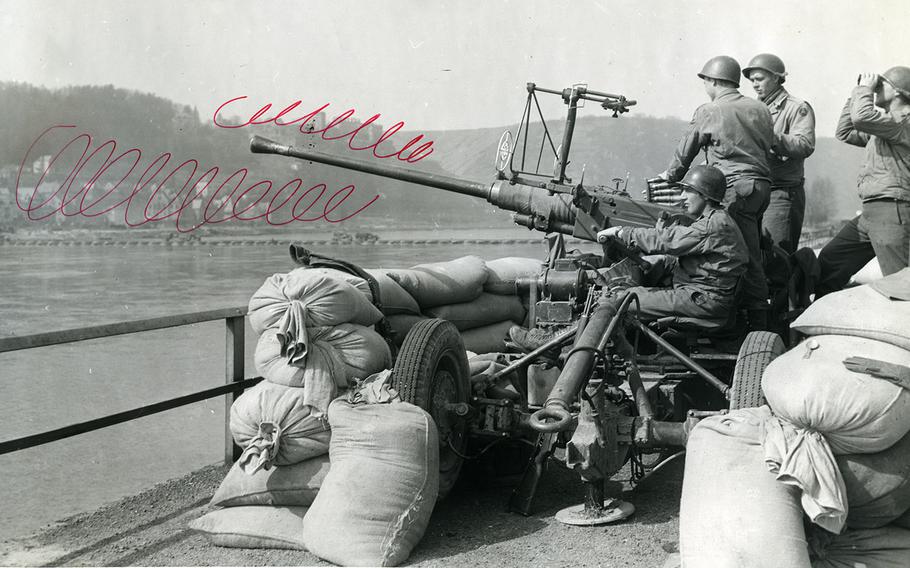
A photo of World War II allied troops at St. Goar, Germany, shows the censor's mark on the background. (U.S. Army Signal Corps)
As troops moved across Europe after the World War II D-Day invasion, they were accompanied by some of the world's greatest reporters and photographers. They, in turn, were followed by a group that sometimes engaged them in a different (but necessary) battle: The censors.
Words could be crossed out and stories rewritten, but with photos it was more complicated. A censor had to look at every aspect of a photo. A small detail might give the enemy information that could cost allied lives. Wielding a red pen, the censor made sure that didn't happen.
Here are three examples of the censor's work. The marked areas were off-limits for publication.
What were the problems?
On one, the background showed the troops' location (St. Goar, on the Rhine River in Germany), so users were instructed to "cut on face" (of the troops) and eliminate the background. The caption was also made more generic.
On another, a patch on a pilot's jacket gave too much information, in the censor's view.
The third shows a tank following a soldier in battle. On the tank are the special blades that enabled them to cut through the hedgerows that slowed down the advance and endangered the tank crews' lives. No, said the censor.